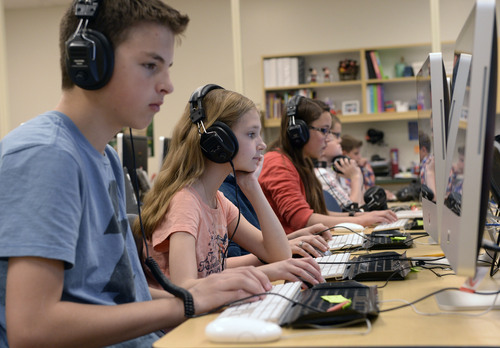This is an archived article that was published on sltrib.com in 2014, and information in the article may be outdated. It is provided only for personal research purposes and may not be reprinted.
Editor's note: Music teacher Denise Jamsa was among 32 Utah educators who recently visited schools in Finland with Brigham Young University's Center for the Study of Europe. Read the related story here.
—
Finnish children start school at the age of seven, attend for only a few hours each day in the early grades, access very few gifted and talented programs, and take no standardized tests until they are at the end of 9th grade.
Yet when they do finally take the international PISA test, they collectively earn very high scores.
Though Finnish teachers acknowledge there's still room for improvement in their schools, they can confidently show evidence that in their country, the slogan "No child left behind" is not a political catchphrase but reality.
I am convinced the reasons for Finland's success lie deep in its history and culture as much as in its school structure. I would like to put forward three useful generalizations about the Finnish mindset.
First, the Finnish people do not take their cultural identity or their national autonomy for granted. After centuries of rule by Sweden and later Russia, Finns feel fortunate their country successfully declared its independence in 1917 and repelled the Russians troops who invaded (and far outnumbered them) during World War II.
Second, Finns believe their best chance at continued peace and prosperity lies not so much in celebrating the "best and brightest" but in lifting the disadvantaged and working to achieve a decent standard of living for all, both nationally and internationally.
Third, Finns are not afraid to use their government as a means of collaborating to achieve the safety net they feel will benefit all citizens.
They cooperate through government to provide a competent military (all males are required to serve for at least nine months), universal health care coverage, strong environmental regulations, extended maternity and paternity leaves, and public funding of all education, including graduate studies and continuing adult education.
Recognizing that their country of 5 million does not have many other resources, Finns are committed to producing a smart population capable of competing for high tech jobs in the world market and helping to solve global problems.
Because education is highly valued and adequately funded, many Finns want to become educators. As a result, only ten percent of those who apply for teacher training programs are accepted. All teachers must have a master's degree and complete additional lifelong training.
However, Finnish teachers are largely free to design their own curricula and assessments of student progress, rather than having to teach for standardized, multiple-choice tests imposed on them by education boards and legislators.
Class sizes are considerably smaller than in America, and additional teacher aides are available to work with special-needs students. Teacher burnout is minimal and good teachers stay in the profession.
I have wondered if anything I have learned from the Finnish school system could possibly transfer to the American school system. Given Americans' distrust of government, it seems highly unlikely that we will ever be comfortable using it as often as the Finns do to meet community challenges.
But public education seems to be one social program which most Americans see a need for, and Utahns especially recognize the value of communities working together to raise young people.
Given our values and the growing evidence of the conditions necessary for real learning, could voters commit to fund smaller classes and professional salaries that would attract more qualified teachers?
Could we require more rigorous education of new teachers and help existing teachers get more training?
And as we attract more qualified teachers, could we resist imposing on them a multitude of standardized tests and trust them to find their own better way of assessing and fostering their students' progress?
Could we commit to funding the resources needed to address the needs of at-risk students? Could we enrich the education of the gifted and talented by isolating them less from other students and instead give them the challenge of helping to teach those who are struggling?
Could we learn to take as much pride in the student with learning disabilities who graduates with good literacy skills as we feel when our gifted and often privileged students earn scholarships to Harvard?
I think we can. And must. In fact, the Finnish system demonstrates that such changes would result in more, not less, of the individuality, creativity and opportunity we value for all citizens of our country.



